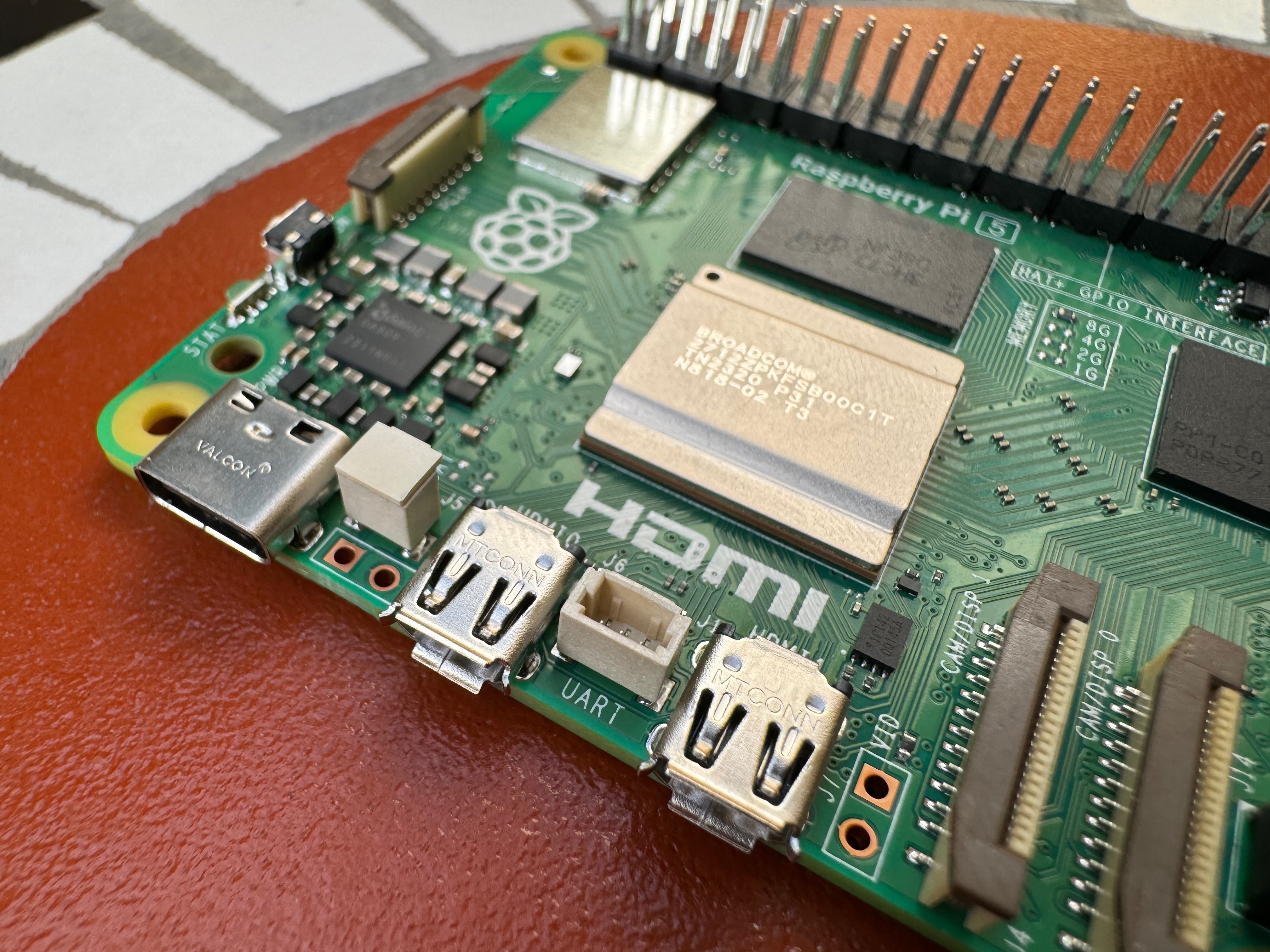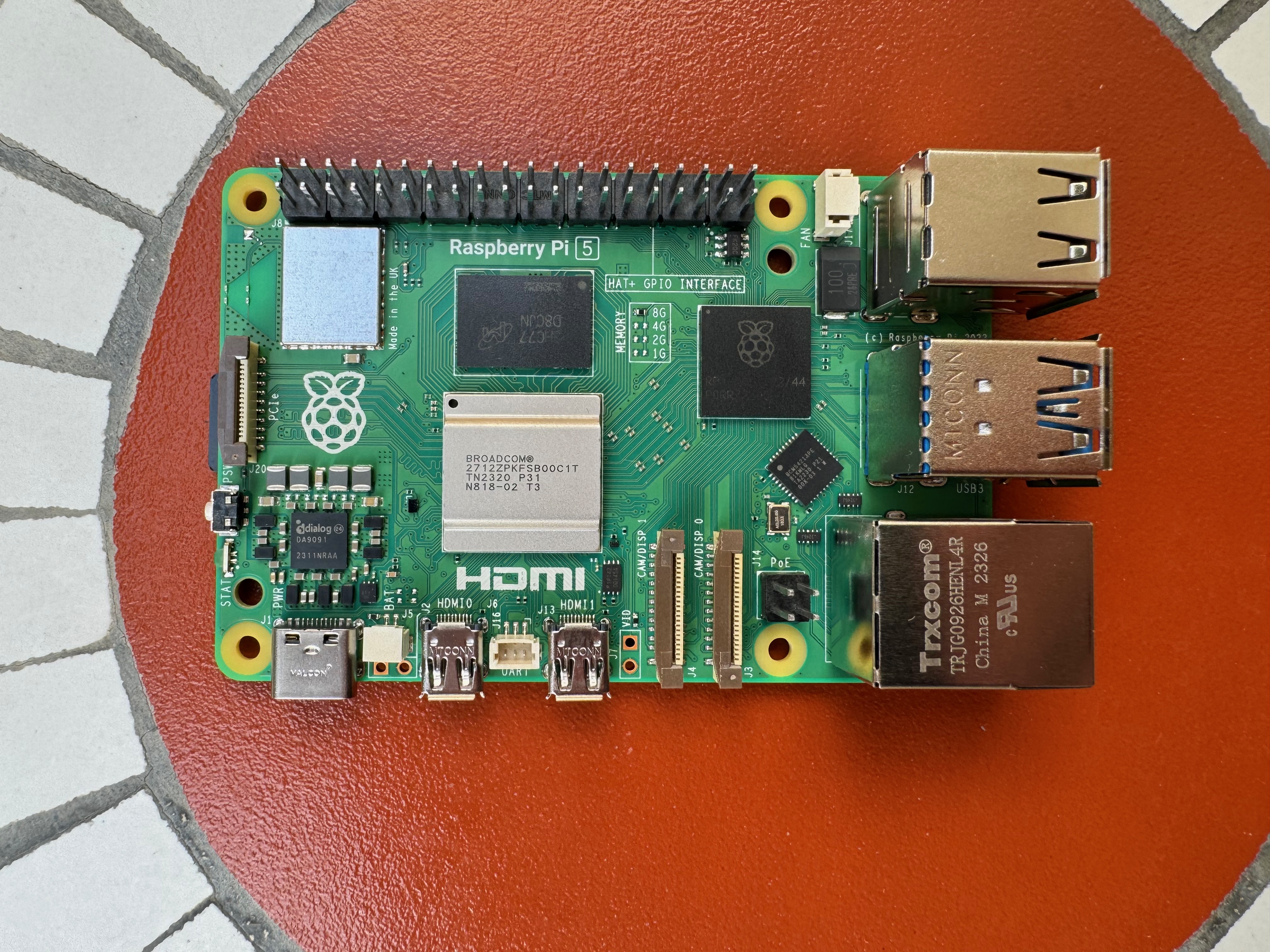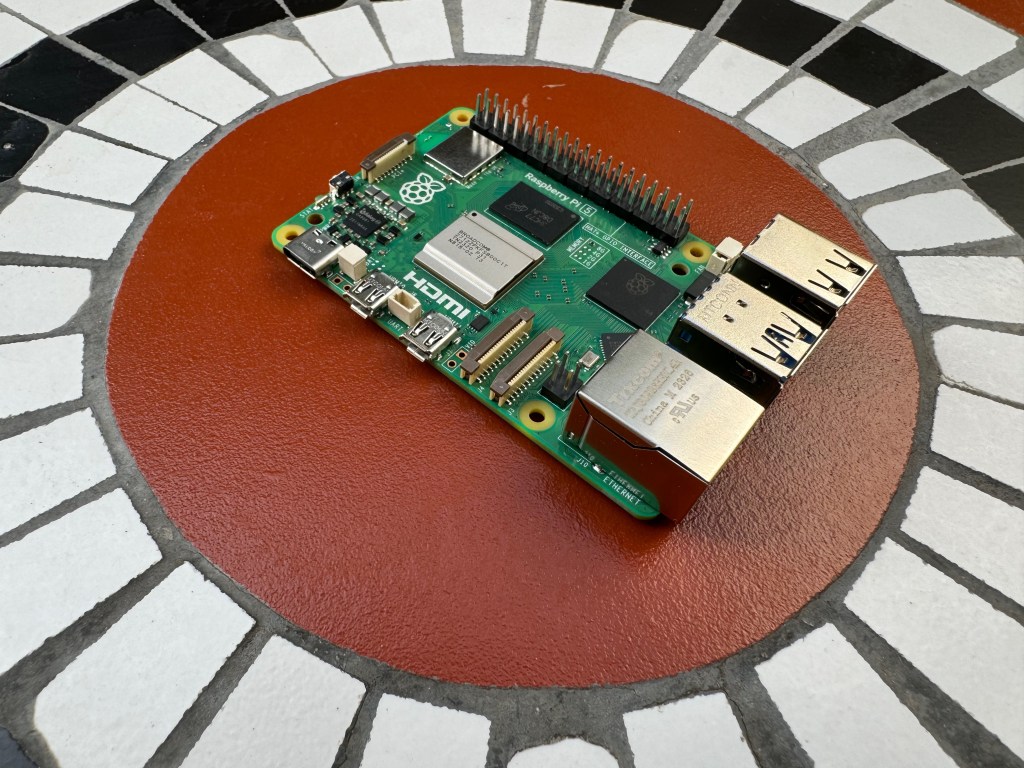Four years after the release of the Raspberry Pi 4, the Raspberry Pi team is back with a new small-but-mighty computer — the Raspberry Pi 5. It’s a worthy successor that features updated components with better specifications — and even some custom silicon.
But first, you may not be familiar with the original concept behind the Raspberry Pi. Since 2012, the Raspberry Pi Foundation and its commercial arm have been designing and selling inexpensive single-board computers that are roughly the size of a deck of cards.
It is based on Arm systems on a chip and features everything you would expect in a full-size computer, such as USB ports, HDMI output, an Ethernet port for networking and more. Over the years, the Raspberry Pi gained new capabilities, such as Wi-Fi and Bluetooth support.
Tech hobbyists immediately started playing around with these small computers to create media servers, retro game consoles, interactive dashboards, robotics projects and more. The Raspberry Pi is a great way to get started with coding and networking.
Shortly after this initial wave of excitement, companies even started using Raspberry Pi as industrial controllers or thin clients for offices. It even led to shortages due to supply chain issues, scalpers and simply being too damn successful.

A close look at the Raspberry Pi 5
Let’s dive into the specifications of the new device. The Raspberry Pi 5 features a 64-bit quad-core Arm Cortex-A76 processor that runs at 2.4GHz (512KB per-core L2 caches, and a 2MB shared L3 cache).
Like the Raspberry Pi 4, it supports Wi-Fi 5 (802.11ac), Bluetooth 5.0, Bluetooth Low Energy and Gigabit Ethernet. There are two micro-HDMI ports, which means you can plug two 4K displays with a 60Hz refresh rate and HDR support using one Raspberry Pi.
When it comes to USB ports, once again it will sound familiar as the Raspberry Pi 5 comes with two full-size USB 3.0 ports with support for simultaneous 5Gbps transfer speeds, and two full-size USB 2.0 ports. There is a USB-C port that acts as the power port.
For the first time, it’s going to be easier to add PCI Express peripherals as the Raspberry Pi team exposes a new single-lane PCIe 2.0 interface. You will have to get a HAT extension (Hardware Attached on Top) or an adapter to take advantage of that interface though. Similarly, power-over-Ethernet is supported through a separate HAT.
You will also find the usual 40-pin header and MIPI camera/display ports (which has been upgraded from 2 × 2 lanes to 2 × 4 lanes). The performance of the microSD card slot has also been doubled.
When it comes to pricing, the Raspberry Pi 5 will only come in two variants — one with 4GB of RAM for $60 and an 8GB version for $80.
The entry price is much more expensive, but the Raspberry Pi 4 is currently available with 1GB, 2GB, 4GB or 8GB of RAM — and it’s not going away. When you compare the two models with the same amount of RAM, Raspberry Pi is raising prices by $5.

Custom silicon for I/O capabilities (and more)
While the main system on a chip is still designed by Broadcom, the Raspberry Pi 5 is the first full-size Raspberry Pi that uses custom silicon — the RP1.
This is a southbridge chip, meaning that it handles I/O functions and replaces some the functions that were previously handled by the main system on a chip. Previous Raspberry Pi models relied on an I/O controller from a third-party company.
In more technical terms, “it takes the ‘I/O controller’ socket, which in previous generations was occupied by parts from Microchip (LAN9512, LAN9514, LAN7515) or Via Labs (VL805). Strictly speaking, it also replaces most of the analog components of the main SoC: GPIO and associated low-speed peripherals, Ethernet MAC, MIPI CSI/DSI, analog TV. This leaves HDMI, SDRAM and PCI Express (both to talk to RP1, and to external devices) on the main SoC,” Raspberry Pi CEO Eben Upton told me in an email.
This isn’t the first custom chip from Raspberry Pi, as the team has designed its own microcontroller chip for the Raspberry Pi Pico — a versatile microcontroller board for IoT devices, light displays, manufacturing processes, etc.
But the Raspberry Pi 5 is yet another sign that the Raspberry Pi team wants to control more of its components. It has reached a scale that legitimates this sort of projects when it comes to unit economics.

Meeting demand
In 2021, Raspberry Pi’s trading arm raised $45 million to invest in its supply chain and develop new products. But the Raspberry Pi has been in high demand for years due to its unique positioning.
For instance, the Raspberry Pi 5 will remain in production until 2035. “The value proposition for Raspberry Pi has always been that you can buy 100,000 of them tomorrow,” Upton told TechCrunch’s Natasha Lomas in an interview about supply chain constraints.
With the Raspberry Pi 5, the company is adding another device on top of its existing lineup. The Raspberry Pi 4 is not going anywhere and will remain in production for a while. Raspberry Pi 5 units will be available to buy before the end of October.
“Production ramps are always challenging, but we have several million units of chipset on order, and expect to be able to build the best part of a million units of Raspberry Pi 5 before Christmas, while sustaining production at the current level for Raspberry Pi 4 and earlier products,” Upton told me.
Waiting for Raspberry Pi: Eben Upton talks supply constraints and demand shock
Raspberry Pi gets $45M to meet demand for low-cost PCs and IoT





























Comment